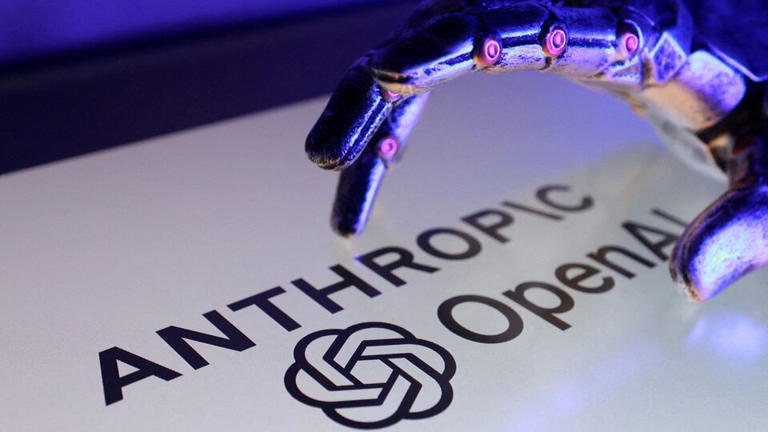Stories you may like
Garrett Camp - UBER
Garrett Camp is a tech-oriented entrepreneur who co-founded Uber
Gordon Scott has been an active investor and technical analyst or 20+ years. He is a Chartered Market Technician (CMT).
Garrett Camp (born 1978) is a native Canadian entrepreneur who is famous for his ground-breaking technology ventures. His best-known companies include Uber and Mix (formerly known as StumbleUpon) both of which he co-founded. Camp is the CEO of Mix and a founding partner of business incubator Expa, through which he funds start-ups. One of his crypto projects is Eco, "designed to be the default protocol for apps that use stablecoins or need stablecoin liquidity."
Key Takeaways
- Garrett Camp is a billionaire entrepreneur who specializes in technologically innovative (and sometimes disruptive) ventures.
- Camp is most famous as the co-founder of Uber.
- Other notable Camp companies are StumbleUpon (now Mix) and Eco.
- Many of Camp's investments are made through Espa, his business incubator.
- Camp's current net worth is $4.6 billion, as of January 2025.
Early Life and Education
Garrett Camp was born and raised in Calgary, Alberta. He completed his Bachelor of Science (B.Sc.) in Electrical Engineering from the University of Calgary between 1996 and 2001, which was followed by a Master of Science (M.Sc.) in Software Engineering from the same institution between 2001 and 2005.
While still in graduate school, Camp and three colleagues launched StumbleUpon in November 2001. StumbleUpon was an internet content discovery portal—the first of its kind—that worked like a web search engine but was personalized to match the interests of the user by drawing on recommendations from connected peers and social networks.
The History of Uber
How the Controversial Ride-Sharing Company Came to Dominate Its Market Worldwide
It's been a wild ride for Uber Inc. (UBER). The company says the idea for its service was cooked up by two computer engineers who found themselves unable to find a taxi on the streets of Paris.1 It quickly became the world's most valuable startup, "disrupted" personal transportation and food delivery, and became an emblem of the arrival of the gig economy.12 By early 2025, 16 years after its launch, it had a market capitalization of $166 billion.3
Along the way, there were sexual harassment scandals, numerous lawsuits, public online protests, customer data hacks and cover-ups, an initial public offering (IPO) that flopped, the ignominious departure of one of its founders as CEO, hundreds of millions of dollars in legal penalties across multiple jurisdictions, and allegations of stealing trade secrets from Alphabet Inc. (GOOGL), one of its investors.456789
Key Takeaways
- Uber's early investors included Goldman Sachs Group, Inc. (GS), Jeff Bezos, BlackRock, Inc. (BLK), and Google (later Alphabet).
- The idea for Uber was so disruptive it was illegal in many cities, but the company pushed ahead with a global expansion anyway.
- The company burned through tens of billions of dollars before it reported its first profit five years after its IPO.
- By 2025, Uber's share price had almost doubled from its 2019 IPO closing price, and the company launched a $7 billion buyback program.
The Founding of Uber
According to the company, the idea for Uber was born in 2008, when computer engineers Travis Kalanick and Garrett Camp, attending a conference in Paris, were unable to hail a taxi. Originally, Camp wanted to focus on a high-end "black-car" service for professionals, but Kalanick didn't like the idea of owning cars and garages. He only agreed to join Camp if the new venture focused solely on a ride-hailing app.1
The two founded the company as UberCab in San Francisco in 2009 and began pitching it to investors as a faster, more luxe version of taxis that could be arranged via a mobile phone app. In July 2010, the company received its first ride request in San Francisco. The city's transit authority quickly told the company to stop offering rides and threatened the company with fines and its people with prison time. In October of the same year, the company was renamed Uber and received $1.25 million in capital investment. Two months later, Kalanick became CEO, replacing Ryan Graves.1
Fast Fact
From 2016 through early 2023, Uber piled up almost $30 billion in operating losses as it tried to capture market share. Its first annual profit as a public company, totaling $1.89 billion, came in 2023.10
Uber's Aggressive Expansion Up to Its IPO
Uber expanded rapidly in its first year, moving quickly to set up shop across the globe, which drove its valuation from $60 million in 2011 to $82 billion at its IPO just eight years later. There were plenty of scandals and controversies along the way—we've corralled them into a timeline below:
- 2011
- Uber launches in New York, taking on the city's iconic yellow taxis, as well as in Paris, its first international market. It also closes two fundraising rounds: a Series A that raises $11 million, followed quickly by a Series B that raised $37 million, including from Goldman Sachs and Amazon founder Jeff Bezos.111
- 2012
- People are now hailing Ubers across the U.S. and in several European cities. Uber introduced UberX, the lower-cost version of its service that became the company's most popular offering.112
- 2013
- Uber now operates in 40 countries, including China, India, and Russia, and it is valued at about $3.5 billion.1
- Uber drivers file a class-action lawsuit to require the company to designate them as employees instead of independent contractors. This fight would drag on for years.
- 2014
- Uber announced that it operates in 250 locations worldwide. In December, the company raised $1.2 billion from investors, including BlackRock and Google Ventures, and is valued at about $40 billion.
- Uber faces large, disruptive strikes by taxi drivers in several European cities. In Paris, drivers burn tires and overturn cars.
- In November, an Uber executive was investigated for using its "God View" tool—designed to monitor customers—on a journalist. The company agreed to pay a $20,000 fine.13
- Uber is banned in Delhi, India, after an Uber driver sexually violated a passenger, raising questions about Uber's system of background checks for drivers.1
Important
In 2016, journalists at BuzzFeed News determined that Uber drivers in three major U.S. cities earned less than $13.25 an hour after expenses.14 A 2025 study put Uber driver pay at about $23.33 ($0.90 per mile driven) for an average weekly gross of $513—figures that don't account for expenses.15
- 2015
- Uber is now in 300 cities.11 Its food-delivery service, UberEats, debuted in New York, Chicago, and Los Angeles.1
- Authorities raid Uber offices in Amsterdam, saying the company is operating illegally. In France, anti-Uber protests turn violent, with taxi drivers attacking suspected Uber drivers.1
- 2016
- Uber sold its China operations to Didi. It began an autonomous driving pilot program in Pittsburgh and San Francisco. The San Francisco pilot was quickly shut down because Uber had not sought, let alone received, city approval.1
- An Uber driver was accused of killing six people in Michigan in his time off between picking up and dropping off passengers, bringing yet more attention to Uber's background check system.16
- 2017
- The #DeleteUber hashtag went viral after the company used surge pricing in an attempt to pad profits during a New York City taxi strike that was called to protest Donald Trump's Muslim ban. Hundreds of thousands of users reportedly canceled their accounts.1317
- Uber agreed to pay $20 million to drivers across the country following a Federal Trade Commission complaint that it misled prospective drivers about their earning potential.18
- In a blog post, former Uber engineer Susan Fowler alleged that her complaints of sexual harassment against her manager were largely ignored. Kalanick hires former U.S. Attorney General Eric Holder to investigate.
- After the law firm Perkins Cole investigated 215 staff complaints going back five years, 20 employees were fired.
- Holder recommends that Kalanick's responsibilities be limited. Kalanick steps down as CEO. He is replaced by Dara Khosrowshahi.11713
- Google sued Uber, alleging that it stole trade secrets from its autonomous driving division.1
- Uber posted a net loss of $4.5 billion.1
- 2018:
- In May, Uber announced it had reached 10 billion total trips, more than double the total a year earlier.1
- Uber settled Google's trade theft claim for $245 million.1
- Uber sold its Southeast Asia operations to Grab, a competitor.
- 2019:
- On May 10, Uber began trading on the New York Stock Exchange. Its share price closed 7.6% lower that day, the worst first-day loss in dollar terms in U.S. history.119 It posted a $5.2 billion loss for the quarter.20
- In the following months, Kalanick sold more than $2.5 billion in shares, completely divesting from the company. By the end of the year, Uber shares were down by about a third from the initial listing price.20 Investors dubbed the situation a "horror show." 21
Uber Turns the Corner
Uber achieved a remarkable turnaround in the years following its IPO. After burning through tens of billions of dollars to capture market share, the company under Khosrowshahi's leadership sharpened its focus on core operations. While ride-hailing was hit hard by the pandemic, Uber Eats kept its customer base engaged, leaving Uber well-positioned to recover once the pandemic ended. It also cast off noncore businesses such as autonomous cars.10
In addition, the company expanded advertising on the app and began offering grocery delivery and other travel services. Khosrowshahi also focused on attracting drivers by improving their experience, a shift for a company that has settled multiple driver lawsuits over the years.
In February 2024, a week after revealing its first annual profit ($1.89 billion), Uber announced a $7 billion share-buyback program.22
By February 2025, Uber shares were trading near an all-time high and almost double the closing price on its first day of trading in 2019. In addition, Uber’s U.S. rideshare business market share had grown from 70% in January 2023 to 76% in December 2024.15
Fast Fact
A 2025 study found that gratuities make up just 10.4% of earnings for rideshare drivers, while for those who deliver meals, such as drivers for UberEats, that goes up to a majority of earnings (53.4%).23
The Bottom Line
Uber has always been controversial, partly because of its willingness to flout local laws forbidding it to operate. As one senior communications executive put it in an internal email in 2014: "...sometimes we have problems because, well, we're just (expletive) illegal."1 Uber is still banned in some countries.
But Kalanick and Camp's vision of disrupting urban mobility has been at least partly realized, and under Khosrowshahi's leadership, the company is on solid footing and finally turning a profit.





User's Comments
No comments there.